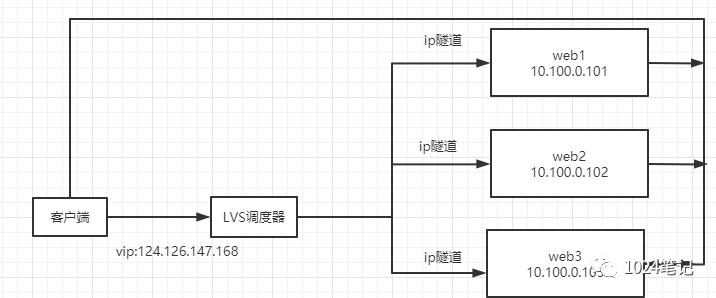在我们使用springboot的时候我们知道因为注解的存在,使得我们的开发变得格外的方便、快捷。之前的文章Spring常用注解大全,值得你的收藏!!!对于spring中各类注解也进行过介绍。然而注解也并不是因为spring框架的兴起才出现的,而是很早就已经在java中被使用。
Java 注解(Annotation)又称 Java 标注,是从 Jdk1.5 开始被添加到 Java中 的。Java 中的类、方法、变量、参数和包等都可以被标注。和 Javadoc 不同,Java 标注可以通过反射获取标注内容。在编译器生成类文件时,标注可以被嵌入到字节码中。Java 虚拟机可以保留标注内容,在运行时可以获取到标注内容 。当然它也支持自定义 Java 标注。Java 注解是用于为 Java 代码提供元数据。作为元数据,注解不直接影响代码的执行,但也有一些类型的注解实际上可以用于这一目的。
学习注解可以更好地理解注解是怎么工作的,更加方便我们日常的开发,提高工作的效率。
一、常用注解
在java.lang包下存在着10个基本的Annotation,其中有3个注解是非常常见的,它们分别是:
@Override :检查该方法是否是重写方法。如果发现其父类,或者是引用的接口中并没有该方法时,会报编译错误。
@Deprecated :标记过时方法。如果使用该方法,会报编译警告。
@SuppressWarnings :指示编译器去忽略注解中声明的警告。
这三个注解是在java.lang中,可以作用下代码上。它们也是我们日常开发中也经常见到的,或许见过了就见过了,知道如何使用,但是注解是如何工作呢?在这之前我们需要先了解下元注解。
元注解可以理解为注解的注解,它是作用在注解中,方便我们使用注解实现想要的功能。元注解分别有@Retention、 @Target、 @Document、 @Inherited和@SafeVarargs(JDK1.7加入)、@FunctionalInterface(JDK1.8加入)、@Repeatable(JDK1.8加入)7种。它们是在java.lang.annotation 中,可以作用在其他注解上:
@Retention:标注这个注解怎么保存,是只在代码中,还是编入class文件中,或者是在运行时可以通过反射访问。比如:
java">
/**注解Repeatable源码*/
@Documented
@Retention(RetentionPolicy.RUNTIME)
@Target(ElementType.ANNOTATION_TYPE)
public @interface Repeatable {
/**
* Indicates the <em>containing annotation type</em> for the
* repeatable annotation type.
* @return the containing annotation type
*/
Class<? extends Annotation> value();
}
@Documented:标记这些注解是否包含在用户文档中。
@Target:标记这个注解应该是哪种 Java 成员。
@Inherited:标记这个注解是继承于哪个注解类(默认 注解并没有继承于任何子类)
从 Java 7 开始,又添加了3 个注解:
@SafeVarargs - Java 7 开始支持,忽略任何使用参数为泛型变量的方法或构造函数调用产生的警告。
@FunctionalInterface - Java 8 开始支持,标识一个匿名函数或函数式接口。
@Repeatable - Java 8 开始支持,标识某注解可以在同一个声明上使用多次。
二、注解Annotation源码
Annotation接口源码:
java">
package java.lang.annotation;
/**
* The common interface extended by all annotation types. Note that an
* interface that manually extends this one does <i>not</i> define
* an annotation type. Also note that this interface does not itself
* define an annotation type.
*
* More information about annotation types can be found in section 9.6 of
* <cite>The Java™ Language Specification</cite>.
*
* The {@link java.lang.reflect.AnnotatedElement} interface discusses
* compatibility concerns when evolving an annotation type from being
* non-repeatable to being repeatable.
*
* @author Josh Bloch
* @since 1.5
*/
public interface Annotation {
/**
* Returns true if the specified object represents an annotation
* that is logically equivalent to this one. In other words,
* returns true if the specified object is an instance of the same
* annotation type as this instance, all of whose members are equal
* to the corresponding member of this annotation, as defined below:
* <ul>
* <li>Two corresponding primitive typed members whose values are
* <tt>x</tt> and <tt>y</tt> are considered equal if <tt>x == y</tt>,
* unless their type is <tt>float</tt> or <tt>double</tt>.
*
* <li>Two corresponding <tt>float</tt> members whose values
* are <tt>x</tt> and <tt>y</tt> are considered equal if
* <tt>Float.valueOf(x).equals(Float.valueOf(y))</tt>.
* (Unlike the <tt>==</tt> operator, NaN is considered equal
* to itself, and <tt>0.0f</tt> unequal to <tt>-0.0f</tt>.)
*
* <li>Two corresponding <tt>double</tt> members whose values
* are <tt>x</tt> and <tt>y</tt> are considered equal if
* <tt>Double.valueOf(x).equals(Double.valueOf(y))</tt>.
* (Unlike the <tt>==</tt> operator, NaN is considered equal
* to itself, and <tt>0.0</tt> unequal to <tt>-0.0</tt>.)
*
* <li>Two corresponding <tt>String</tt>, <tt>Class</tt>, enum, or
* annotation typed members whose values are <tt>x</tt> and <tt>y</tt>
* are considered equal if <tt>x.equals(y)</tt>. (Note that this
* definition is recursive for annotation typed members.)
*
* <li>Two corresponding array typed members <tt>x</tt> and <tt>y</tt>
* are considered equal if <tt>Arrays.equals(x, y)</tt>, for the
* appropriate overloading of {@link java.util.Arrays#equals}.
* </ul>
*
* @return true if the specified object represents an annotation
* that is logically equivalent to this one, otherwise false
*/
boolean equals(Object obj);
/**
* Returns the hash code of this annotation, as defined below:
*
* <p>The hash code of an annotation is the sum of the hash codes
* of its members (including those with default values), as defined
* below:
*
* The hash code of an annotation member is (127 times the hash code
* of the member-name as computed by {@link String#hashCode()}) XOR
* the hash code of the member-value, as defined below:
*
* <p>The hash code of a member-value depends on its type:
* <ul>
* <li>The hash code of a primitive value <tt><i>v</i></tt> is equal to
* <tt><i>WrapperType</i>.valueOf(<i>v</i>).hashCode()</tt>, where
* <tt><i>WrapperType</i></tt> is the wrapper type corresponding
* to the primitive type of <tt><i>v</i></tt> ({@link Byte},
* {@link Character}, {@link Double}, {@link Float}, {@link Integer},
* {@link Long}, {@link Short}, or {@link Boolean}).
*
* <li>The hash code of a string, enum, class, or annotation member-value
I <tt><i>v</i></tt> is computed as by calling
* <tt><i>v</i>.hashCode()</tt>. (In the case of annotation
* member values, this is a recursive definition.)
*
* <li>The hash code of an array member-value is computed by calling
* the appropriate overloading of
* {@link java.util.Arrays#hashCode(long[]) Arrays.hashCode}
* on the value. (There is one overloading for each primitive
* type, and one for object reference types.)
* </ul>
*
* @return the hash code of this annotation
*/
int hashCode();
/**
* Returns a string representation of this annotation. The details
* of the representation are implementation-dependent, but the following
* may be regarded as typical:
* <pre>
* @com.acme.util.Name(first=Alfred, middle=E., last=Neuman)
* </pre>
*
* @return a string representation of this annotation
*/
String toString();
/**
* Returns the annotation type of this annotation.
* @return the annotation type of this annotation
*/
Class<? extends Annotation> annotationType();
}
RetentionPolicy源码:
java">
package java.lang.annotation;
/**
* Annotation retention policy. The constants of this enumerated type
* describe the various policies for retaining annotations. They are used
* in conjunction with the {@link Retention} meta-annotation type to specify
* how long annotations are to be retained.
*
* @author Joshua Bloch
* @since 1.5
*/
public enum RetentionPolicy {
/**
* Annotations are to be discarded by the compiler.
*/
SOURCE, /* Annotation信息仅存在于编译器处理期间,编译器处理完之后就没有该Annotation信息了 */
/**
* Annotations are to be recorded in the class file by the compiler
* but need not be retained by the VM at run time. This is the default
* behavior.
*/
CLASS, /* 编译器将Annotation存储于类对应的.class文件中。默认行为 */
/**
* Annotations are to be recorded in the class file by the compiler and
* retained by the VM at run time, so they may be read reflectively.
*
* @see java.lang.reflect.AnnotatedElement
*/
RUNTIME /* 编译器将Annotation存储于class文件中,并且可由JVM读入 */
}
ElementType源码:
java">package java.lang.annotation;
/**
* The constants of this enumerated type provide a simple classification of the
* syntactic locations where annotations may appear in a Java program. These
* constants are used in {@link Target java.lang.annotation.Target}
* meta-annotations to specify where it is legal to write annotations of a
* given type.
*
* <p>The syntactic locations where annotations may appear are split into
* <em>declaration contexts</em> , where annotations apply to declarations, and
* <em>type contexts</em> , where annotations apply to types used in
* declarations and expressions.
*
* <p>The constants {@link #ANNOTATION_TYPE} , {@link #CONSTRUCTOR} , {@link
* #FIELD} , {@link #LOCAL_VARIABLE} , {@link #METHOD} , {@link #PACKAGE} ,
* {@link #PARAMETER} , {@link #TYPE} , and {@link #TYPE_PARAMETER} correspond
* to the declaration contexts in JLS 9.6.4.1.
*
* <p>For example, an annotation whose type is meta-annotated with
* {@code @Target(ElementType.FIELD)} may only be written as a modifier for a
* field declaration.
*
* <p>The constant {@link #TYPE_USE} corresponds to the 15 type contexts in JLS
* 4.11, as well as to two declaration contexts: type declarations (including
* annotation type declarations) and type parameter declarations.
*
* <p>For example, an annotation whose type is meta-annotated with
* {@code @Target(ElementType.TYPE_USE)} may be written on the type of a field
* (or within the type of the field, if it is a nested, parameterized, or array
* type), and may also appear as a modifier for, say, a class declaration.
*
* <p>The {@code TYPE_USE} constant includes type declarations and type
* parameter declarations as a convenience for designers of type checkers which
* give semantics to annotation types. For example, if the annotation type
* {@code NonNull} is meta-annotated with
* {@code @Target(ElementType.TYPE_USE)}, then {@code @NonNull}
* {@code class C {...}} could be treated by a type checker as indicating that
* all variables of class {@code C} are non-null, while still allowing
* variables of other classes to be non-null or not non-null based on whether
* {@code @NonNull} appears at the variable's declaration.
*
* @author Joshua Bloch
* @since 1.5
* @jls 9.6.4.1 @Target
* @jls 4.1 The Kinds of Types and Values
*/
public enum ElementType {
/** Class, interface (including annotation type), or enum declaration */
TYPE, /* 类、接口(包括注释类型)或枚举声明 */
/** Field declaration (includes enum constants) */
FIELD, /* 字段声明(包括枚举常量) */
/** Method declaration */
METHOD, /* 方法声明 */
/** Formal parameter declaration */
PARAMETER, /* 参数声明 */
/** Constructor declaration */
CONSTRUCTOR, /* 构造方法声明 */
/** Local variable declaration */
LOCAL_VARIABLE, /* 局部变量声明 */
/** Annotation type declaration */
ANNOTATION_TYPE, /* 注释类型声明 */
/** Package declaration */
PACKAGE, /* 包声明 */
/**
* Type parameter declaration
*
* @since 1.8
*/
TYPE_PARAMETER, /*类型参数声明*/
/**
* Use of a type
*
* @since 1.8
*/
TYPE_USE /*使用类型*/
}
通过以上可以总结出Annotation的结构:

由上面的内容可以得出以下Annotation具有以下特性:
1、Annotation就是个接口,而注解本身就是Annotation接口的子接口。ElementType是枚举类型,它用来指定Annotation 的类型。RetentionPolicy也是枚举类型,它用来指定 Annotation的策略。可以理解为不同 RetentionPolicy 类型的 Annotation 的作用域不同。
2、1 个 Annotation 和 1 个 RetentionPolicy 关联。即每个Annotation对象,都会有唯一的RetentionPolicy属性;1 个 Annotation 和 1~n 个 ElementType 关联,即每个 Annotation 对象,可以有若干个 ElementType 属性。
3、Annotation 有许多实现类,包括:Deprecated, Documented, Inherited, Override 等等。
总结:Annotation的每个实现类,都和1个 RetentionPolicy 关联并且和多个个 ElementType 关联。
三、自定义注解
通过上面的介绍,使用元注解我们就可以自己来声明自定义注解了。
定义注解:
java">//就x像定义一个接口一样,只不过它多了一个@
public @interface MyTestAnnotation {
}
上面这种没有任何成员变量的注解称作为标记注解,@Overried就是一个标记注解。
注解的作用就是给类、方法注入信息,所以注解也可以声明成员变量,带成员变量的注解叫做元数据Annotation,在注解中定义成员变量,语法类似于声明方法。
java">public @interface MyTestAnnotation {
//定义了两个成员变量
String username();
int age();
}
在注解声明属性的时候,给出默认值。那么在修饰的时候,就可以不用具体指定了。
java">public @interface MyTestAnnotation {
//定义了两个成员变量
String username() default "江夏";;
int age() default 20;
}
注意:注解属性类型只能是以下的几种类型
1、基本数据类型
2、String
3、枚举类型
4、注解类型
5、Class类型
java">//注解拥有什么属性,在修饰的时候就要给出相对应的值,
@MyTestAnnotation (name="江夏",age = 20)
public class User{
}
像上面的代码中注解有多个属性,则可以在注解括号中用“,”号隔开分别给对应的属性赋值。
如果注解上只有一个属性,并且属性的名称为value,那么在使用的时候,我们可以不写value,直接赋值给它就行
java">
public @interface MyTestAnnotation {
String value();
}
使用注解,可以不指定value,直接赋值
java">
@MyTestAnnotation("江夏")
public void User() {
}
上面是如何定义注解,放在哪,而使用注解的关键就是注解属性的提取,获取属性的值也是使用注解的目的。
获取注解属性使用的是反射,这主要有三个基本的方法:
java">
/**是否存在对应 Annotation 对象*/
public boolean isAnnotationPresent(Class<? extends Annotation> annotationClass) {
return GenericDeclaration.super.isAnnotationPresent(annotationClass);
}
/**获取 Annotation 对象*/
public <A extends Annotation> A getAnnotation(Class<A> annotationClass) {
Objects.requireNonNull(annotationClass);
return (A) annotationData().annotations.get(annotationClass);
}
/**获取所有 Annotation 对象数组*/
public Annotation[] getAnnotations() {
return AnnotationParser.toArray(annotationData().annotations);
}
下面结合前面的例子,我们来获取一下注解属性,在获取之前我们自定义的注解必须使用元注解@Retention(RetentionPolicy.RUNTIME):
java">package com.jiang.AnnotationPackage;
import java.lang.annotation.*;
@Documented
@Inherited
@Retention(RetentionPolicy.RUNTIME)
@Target(ElementType.TYPE)
public @interface MyTestAnnotation {
String name() default "江夏";
int age() default 18;
}
java">
package com.jiang.AnnotationPackage;
/**
* 声明一个类,使用自定义注解
*/
@MyTestAnnotation(name = "江夏",age = 20)
public class AnnotationUser {
}
java">package com.jiang.AnnotationPackage;
public class AnnotationDemo {
public static void main(String[] args) {
/**
* 获取类注解属性
*/
Class<AnnotationUser> userClass = AnnotationUser.class;
/**是否存在对应 Annotation 对象*/
boolean annotationPresent = userClass.isAnnotationPresent(MyTestAnnotation.class);
if(annotationPresent){
/**获取 Annotation 对象*/
MyTestAnnotation myTestAnnotation = userClass.getAnnotation(MyTestAnnotation.class);
System.out.println("姓名是:"+myTestAnnotation.name());
System.out.println("年龄是:"+myTestAnnotation.age());
}
}
}
运行结果如下:

通过上述方法获取了属性信息之后,就可以把注解上的信息注入到方法上了。这里也是使用了反射。主要步骤如下:
java"> //1、反射出该类的方法
Class classA = AnnotationDemo2.class;
Method method = classA .getMethod("say", String.class, int.class);
//2、通过该方法得到注解上的具体信息
MyTestAnnotation annotation = method.getAnnotation(MyTestAnnotation.class);
String name = annotation.username();
int age = annotation.age();
//将注解上的信息注入到方法上
Object o = classA.newInstance();
method.invoke(o, name, age);
例子如下:
java">
package com.jiang.AnnotationPackage;
import java.lang.annotation.*;
/**
* 声明一个自定义注解
*/
@Documented
@Retention(RetentionPolicy.RUNTIME)
@Target(ElementType.METHOD)
public @interface MyTestAnnotation2 {
int result() default 50;
}
java">
package com.jiang.AnnotationPackage;
import java.lang.reflect.Method;
/**
* 自定义注解在方法上的使用
*/
public class MyTestAnnotationDemo2 {
/**
* @param number 猜数的大小
*/
@MyTestAnnotation2(result = 85)
public static void guess(int number){
System.out.println(processGuess(number));
}
private static String processGuess(int number){
try {
Method guessnumber = MyTestAnnotationDemo2.class.getDeclaredMethod("guess",int.class);
boolean annotationPresent = guessnumber.isAnnotationPresent(MyTestAnnotation2.class);
if(annotationPresent){
MyTestAnnotation2 annotation2 = guessnumber.getAnnotation(MyTestAnnotation2.class);
if(number>annotation2.result()){
return "猜的数字大于指定数字";
}else if (number==annotation2.result()){
return "猜的数字等于指定数字";
}else{
return "猜的数字小于指定数字";
}
}
} catch (NoSuchMethodException e) {
e.printStackTrace();
}
return "猜测程序有误";
}
public static void main(String[] args) {
guess(85);
//guess(84);
//guess(86);
}
}
输出结果如下:



这篇文章主要介绍了一些常用的注解,以及注解的源码,然后通过注解的一些特性和属性,我们可以自定义注解。
如果觉得本文写的不错,就点个三连吧。
如果觉得文章有不足之处需要改正的地方欢迎指出!
感兴趣的同学也可以扫描关注下方微信公众号,可以免费获取海量学习资源哦。





